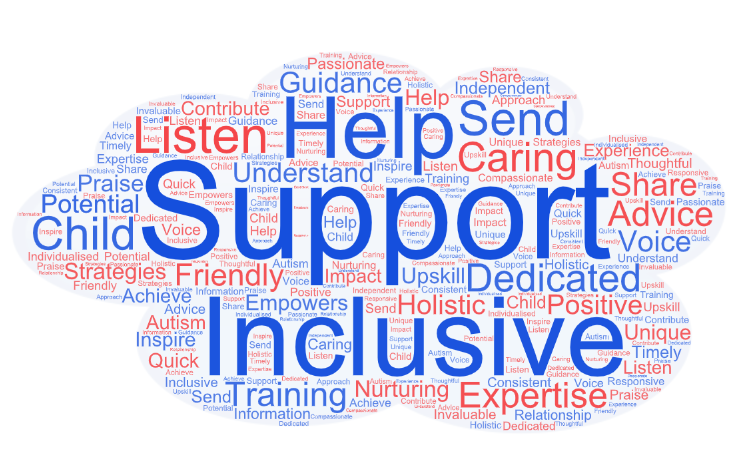SEND introduction
What are Special Educational Needs and Disabilities (SEND)?
A student has SEND if they have a learning difficulty or disability that requires special educational provision to be made for them.
They have a learning difficulty or disability if they have:
- A significantly greater difficulty in learning than most others of the same age, or
- A disability which prevents or hinders them from making use of facilities of a kind generally provided for others of the same age in mainstream schools

Special educational provision is educational or training provision that is additional to, or different from, that made generally for other children or young people of the same age in the school
Students are considered to have a disability if they have a physical or mental impairment that has a substantial and long-term adverse effect on their ability to do normal daily activities.
The school will make reasonable adjustments for students with disabilities, so that they are not at a substantial disadvantage compared with their peers.
The 4 areas of need
The needs of students with SEND are grouped into 4 broad areas. Students can have needs that cut across more than 1 area, and their needs may change over time.
Interventions will be selected that are appropriate for the student’s particular area(s) of need, at the relevant time.
|
Area of need
|
Description |
|
|
Communication and interaction |
Students with needs in this area have difficulty communicating with others. They may have difficulty understanding what is being said to them, have trouble expressing themselves, or do not understand or use the social rules of communication. Students who are on the autism spectrum often have needs that fall in this category. |
|
|
Cognition and learning |
Students with learning difficulties usually learn at a slower pace than their peers. A wide range of needs are grouped in this area, including:
|
|
|
Social, emotional and mental health |
These needs may reflect a wide range of underlying difficulties or disorders and can manifest in many ways, for example as challenging, disruptive or disturbing behaviour, or by the student becoming withdrawn or isolated. Students may have:
|
|
|
Sensory and/or physical |
Students with these needs have a disability that hinders them from accessing the educational facilities generally provided. These students may need ongoing additional support and equipment to access all the opportunities available to their peers. Students may have:
|
|
What are the signs of SEND?
Recognising the signs of SEND early can help you get the support your child needs, making a big difference in their growth, learning and development. If you think your child has SEND, here are a few things to look out for:
Cognition and learning
A child may have difficulty with:
- Reading or spelling
- Understanding instructions, or carrying out tasks
- Remembering and retaining information
Communication and interaction
A child may have difficulty:
- Talking to others, or having conversations
- Understanding what someone is saying to them
- Interacting with others or understanding social cues (such as not being able to take turns)
Physical and sensory
A child may have:
- Hearing impairment or loss
- Vision impairment or loss
- Physical disability
- Multi-sensory impairment
Social, emotional and mental health
A child may:
- Display low self-esteem or anxious behaviours
- Display behaviours that others can find challenging, disruptive or distressing
- Have underlying conditions which affect their mental health
If at any stage you are concerned about your child's learning and progress, please discuss this initially with their tutor.
SEND at Winterbourne Academy
Meet our dedicated SEND team here.
Our SEND Information Report details how SEND works at Winterbourne Academy and provides answers to frequently asked questions. You can also read our SEND Policy here.




